|
Sunday:
August 6, 2000 | |
1945 GMT |
 |
Cargo freighter launched to international space station
A Russian Soyuz rocket boosted an unmanned Progress supply craft into orbit today carrying critical equipment and fuel to the international space station, along with supplies for its first full-time crew.
 FULL STORY FULL STORY
 PROGRESS 251/1P DETAILED TIMELINE PROGRESS 251/1P DETAILED TIMELINE
 SPACE STATION INDEX SPACE STATION INDEX
 |  |

|
 |
Comet LINEAR: Going, going...but not quite gone
Continuous monitoring of Comet LINEAR by the Jacobus Kapteyn Telescope showed that it was disintegrating as it approached the Sun. The latest and best images from the larger aperture Isaac Newton Telescope now give us the clearest idea so far of how and why the comet disintegrated.
 FULL STORY FULL STORY
 |  |

|
 |
Arianespace pulling double duty for two missions
Europe's Arianespace is juggling pre-flight preparations for an Ariane 4 and an Ariane 5 rocket at its launch site in the South American jungle. Check out our Mission Status Center pages for updated coverage of both launches.
 ARIANE 4 FLIGHT 131 STATUS ARIANE 4 FLIGHT 131 STATUS
 ARIANE 5 FLIGHT 130 STATUS ARIANE 5 FLIGHT 130 STATUS
 |  |

|
 |
|
Saturday:
August 5, 2000 | |
0210 GMT |
 |
Mars launch in 2014 would offer safety for astronauts
The best opportunity in the near future to launch the first human mission to Mars will come in 2014 because an alignment of planetary bodies that year provides an ideal escape route back to Earth, in case of an Apollo 13 type of accident.
 FULL STORY FULL STORY
 |  |

|
 |
ESO spies new Jovian moon
Two astronomers, both specialists in minor bodies in the solar system, Have performed observations with ESO telescopes that provide important information about a small moon, recently discovered in orbit around the solar system's largest planet, Jupiter.
 FULL STORY FULL STORY
 |  |
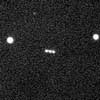
|
 |
|
Friday:
August 4, 2000 | |
0254 GMT |
 |
SOHO sun probe improves space weather forecasting
Safe operation of the International Space Station depends on timely warnings of eruptions on the Sun, a European scientist using the joint ESA/NASA SOHO solar observatory says.
 FULL STORY FULL STORY
 |  |

|
 |
Rocks give clues to origin of Earth's oxygen and life
Scientists analyzing some of the oldest-known rocks on Earth have discovered for the first time a way to recover from the geological record details about the evolution of oxygen and ozone in the planet's early atmosphere -- two key ingredients that permitted and recorded the expansion of terrestrial life.
 FULL STORY FULL STORY
 |  |
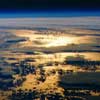
|
 |
Cassini programmed for exploring Jupiter, Saturn
New flight software loaded last week on NASA's Cassini spacecraft, required for Cassini's main mission at Saturn, will also strengthen the craft's ability to study Jupiter when it swings past that planet later this year.
 FULL STORY FULL STORY
 |  |

|
 |
DAILY BRIEFING Other stories making news today
|
 |
Space Media, RSC Energia form multimedia partnership -- Space Media has joined forces with RSC Energia forming a multimedia partnership, Enermedia LLC. Space Media will develop and provide multimedia content both for television broadcast and Internet distribution from the Russian Service Module of the International Space Station (ISS) and Russian Space Program archives.
|
 |
|
Thursday:
August 3, 2000 | |
0235 GMT |
 |
FUSE satellite hot on gas trail of ordinary dark matter
Astronomers analyzing data from the Far Ultraviolet Spectrographic Explorer satellite have found the interstellar signposts that may lead them to the direct detection of ordinary dark matter in the universe, one of the major quests of modern astronomy.
 FULL STORY FULL STORY
 |  |
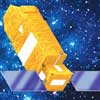
|
 |
A dying star seen by Hubble
The globular cluster Messier 15 is shown in this color image obtained with the NASA Hubble Space Telescope. Lying some 40,000 light-years from Earth in the direction of the constellation Pegasus, M15 is one of nearly 150 known globular clusters that form a vast halo surrounding our Milky Way galaxy.
 FULL STORY FULL STORY
 |  |
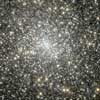
|
 |
New ideas halt Japanese shuttle program
The Japanese derivative of the space shuttle, called the H-2 Orbiting Plane-Experiment (HOPE-X), has hit a snag in its development. Differing ideas on how the shuttle should be launched were brought up inside of NASDA and needed more time to be evaluated.
 FULL STORY FULL STORY
 |  |

|
 |
DAILY BRIEFING Other stories making news today
|
 |
Cluster 2 project manager looks back to perfect launch -- Two weeks after the first pair of Cluster spacecraft lifted off from Baikonur Cosmodrome, Project Manager John Ellwood looked back contentedly on the successful completion of the first act in this two-part launch drama.
|
 |
|
Wednesday:
August 2, 2000 | |
1940 GMT |
 |
Film yields amazing views of first Atlas 3 rocket launch
When the inaugural Atlas 3 rocket blasted off in May, a network of high-speed film cameras was focused on the new Lockheed Martin booster and its Russian-made engine. We offer a few incredible views in QuickTime format.
 FULL STORY FULL STORY
 |  |

|
 |
Inside a neutron star
The world-famous Lovell Telescope at Jodrell Bank Observatory has discovered a pulsar that is wobbling, giving astronomers a glimpse into the interior of a neutron star -- the extremely dense remnant of a massive normal star that has undergone a supernova explosion.
 FULL STORY FULL STORY
 |  |
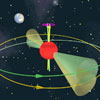
|
 |
Mars Global Surveyor sees trough and shallow crater
A random picture taken by NASA's Mars Global Surveyor space probe orbiting the Red Planet has revealed one of the troughs of the Sirenum Fossae and an adjacent shallow crater.
 FULL STORY FULL STORY
 |  |
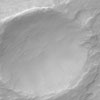
|
 |
DAILY BRIEFING Other stories making news today
|
 |
Hispasat, ILS sign contract for launch of Hispasat 1D -- Hispasat S.A. has contracted with International Launch Services for lofting its Hispasat 1D satellite aboard a Lockheed Martin Atlas 2AS in the third quarter 2002.
|
 |
|
Tuesday:
August 1, 2000 | |
1831 GMT |
 |
$12.5 million invested for new SETI telescope
Investor and philanthropist Paul G. Allen and former Microsoft Chief Technology Officer Nathan P. Myhrvold will fund the development phase of a new telescope that will be the world's most powerful instrument designed to seek out signals from civilizations elsewhere in our galaxy.
 FULL STORY FULL STORY
 |  |

|
 |
Zvezda takes control of international space station
The international space station is now under computer control from its newest addition, the Zvezda service module, following a "handover" of that responsibility this weekend from the Zarya module.
 FULL STORY FULL STORY
 |  |

|
 |
UK space efforts lack ambition, says report
A space strategy document published by the government last year has been
described as "limited in ambition" by the House of Commons Trade and
Industry Select Committee.
 FULL STORY FULL STORY
 |  |

|
 |
Through clouds, Radarsat produces image of U.S.
A mosaic of the United States taken by the Canadian Space Agency's renowned Radarsat-1 Synthetic Aperture Radar (SAR) satellite was recently presented to an international geoscience symposium.
 FULL STORY FULL STORY
 |  |

|
 |
DAILY BRIEFING Other stories making news today
|
 |
Galileo cruises farther from Jupiter while replaying data -- NASA's Galileo spacecraft continues outbound from the heart of the Jovian system on the longest and largest orbit since its arrival at Jupiter while playing back science data that were acquired its May flyby of Ganymede.
|
 |
|
Monday:
July 31, 2000 | |
2000 GMT |
 |
Fire threatened telescopes, stopped comet observations
Astronomers trying to learn more about the apparent demise of Comet LINEAR were forced to abandon their work this weekend as a forest fire threatened the cluster of telescopes atop La Palma in the Canary Islands.
 FULL STORY FULL STORY
 |  |
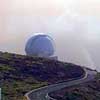
|
 |
Air Force resets Titan 4 rocket launch for Aug. 16
Round-the-clock preparations are underway at Vandenberg Air Force Base for next month's launch of a Titan 4B rocket after officials Friday cleared a problem with the spy satellite cargo to be carried aloft.
 FULL STORY FULL STORY
 |  |

|
 |
German satellite working despite damage from rocket
The German CHAMP Earth sciences satellite is proceeding successfully through a series of on-orbit checks of its systems even though controllers believe the craft was hit as the Cosmos rocket's nose cone separated during launch two weeks ago.
 FULL STORY FULL STORY
 |  |

|
 |
DAILY BRIEFING Other stories making news today
|
 |
NASA names astronaut candidate class of 2000 -- Seventeen men and women have been selected for the astronaut candidate class of 2000, scheduled to arrive at NASA's Johnson Space Center, Houston in August to begin a period of training and evaluation.
|
 |
 |

